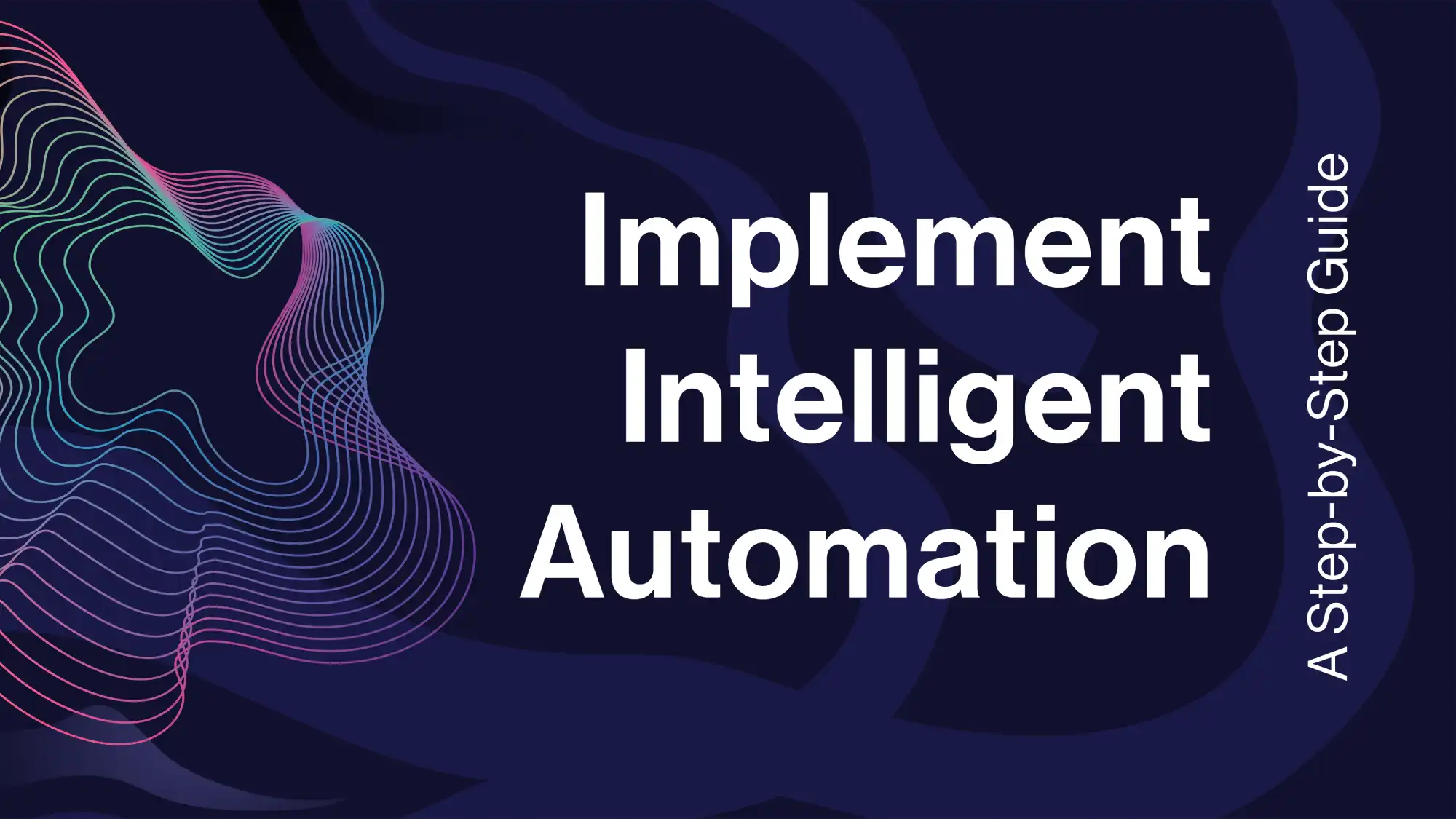Intelligent Automation (IA) is revolutionizing how businesses operate, streamline processes, and enhance efficiency. By combining Robotic Process Automation (RPA) with Artificial Intelligence (AI), companies can automate complex tasks, improve decision-making, and unlock new levels of productivity. This comprehensive guide will walk you through the essential steps to successfully implement Intelligent Automation in your organization.
1. Discovery and Assessment:
Begin by identifying processes ripe for automation. Look for repetitive, rule-based tasks that consume significant time and resources. Conduct a thorough assessment of these processes, considering factors like complexity, data availability, and potential ROI. Prioritize processes that offer the highest potential for value and impact.
2. Design and Planning:
Once you've identified target processes, design a detailed automation plan. This involves mapping out the steps of the process, defining the desired outcomes, and selecting the appropriate automation tools and technologies. Consider both RPA and AI capabilities to address the specific needs of each process.
3. Development and Implementation:
With a well-defined plan in place, the next step is to develop and implement your automation solution. This may involve configuring RPA bots, integrating AI models, and establishing data pipelines. Ensure that your solution is scalable, flexible, and adaptable to changing business needs.
4. Testing and Validation:
Thorough testing is crucial to ensure the reliability and accuracy of your automation solution. Conduct comprehensive testing in a controlled environment to identify and address any issues or errors. Validate the results against your desired outcomes and make necessary adjustments.
5. Deployment and Monitoring:
Once your automation solution has been thoroughly tested and validated, it's time to deploy it into production. Monitor the performance of your automation closely, tracking key metrics such as efficiency gains, cost savings, and error rates. Use this data to identify areas for further optimization and improvement.
6. Continuous Improvement:
Intelligent Automation is not a one-time project but an ongoing journey. Continuously monitor and analyze the performance of your automation solutions. Gather feedback from users and stakeholders to identify areas for enhancement. Leverage AI capabilities to learn from data and improve the accuracy and effectiveness of your automation over time.
7. Change Management:
Successful IA implementation requires effective change management. Communicate the benefits of automation to employees, address concerns, and provide training and support to ensure a smooth transition. Foster a culture of innovation and continuous improvement to maximize the value of your automation investments.
Conclusion
Intelligent Automation is a powerful tool that can transform your business operations. By following this step-by-step guide and partnering with experienced professionals like those at Blueriver, you can successfully implement IA and unlock its full potential for your organization. Embrace the power of automation and AI to drive efficiency, productivity, and innovation in the digital age.
